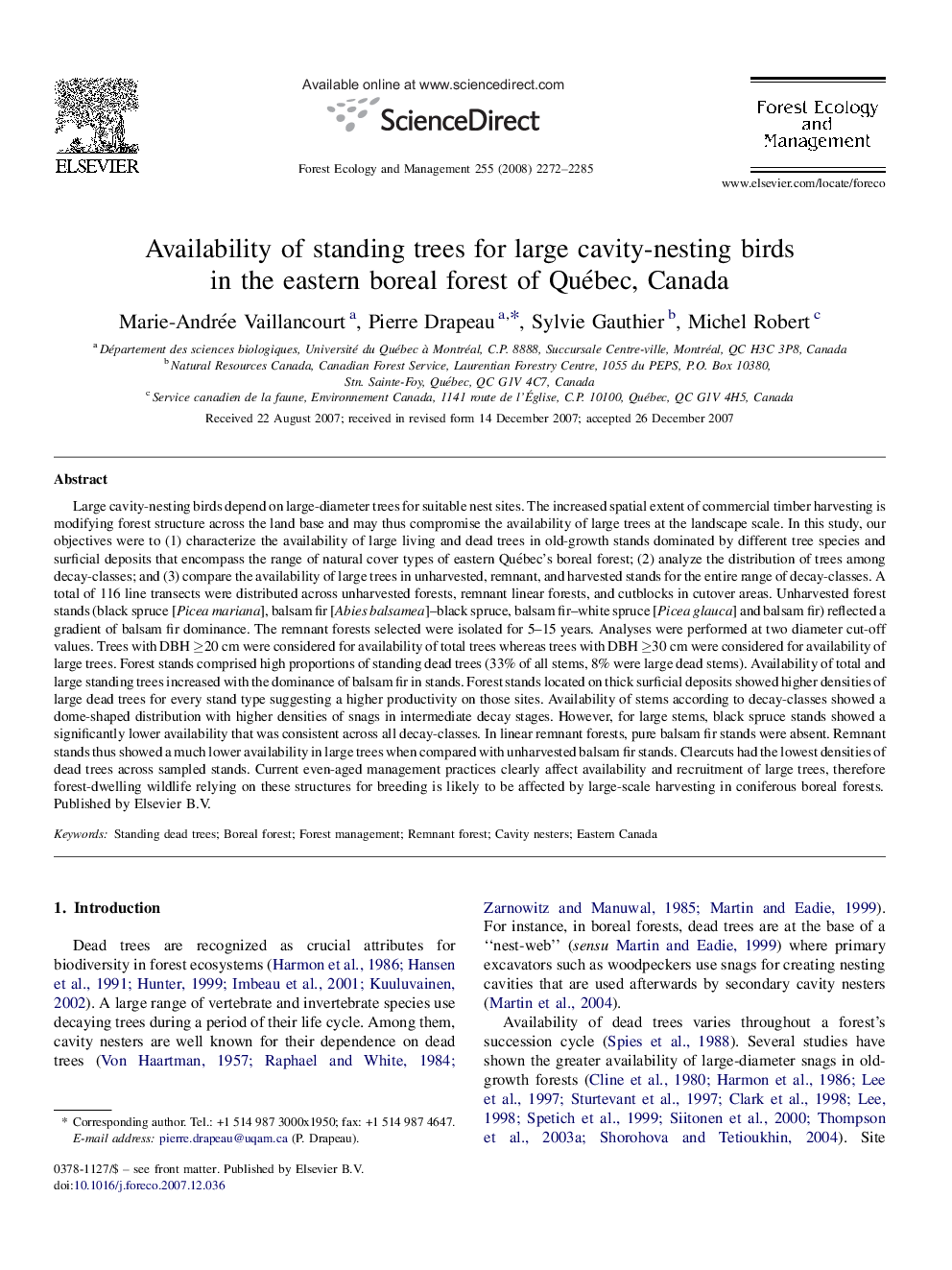| کد مقاله | کد نشریه | سال انتشار | مقاله انگلیسی | نسخه تمام متن |
|---|---|---|---|---|
| 89365 | 159340 | 2008 | 14 صفحه PDF | دانلود رایگان |

Large cavity-nesting birds depend on large-diameter trees for suitable nest sites. The increased spatial extent of commercial timber harvesting is modifying forest structure across the land base and may thus compromise the availability of large trees at the landscape scale. In this study, our objectives were to (1) characterize the availability of large living and dead trees in old-growth stands dominated by different tree species and surficial deposits that encompass the range of natural cover types of eastern Québec's boreal forest; (2) analyze the distribution of trees among decay-classes; and (3) compare the availability of large trees in unharvested, remnant, and harvested stands for the entire range of decay-classes. A total of 116 line transects were distributed across unharvested forests, remnant linear forests, and cutblocks in cutover areas. Unharvested forest stands (black spruce [Picea mariana], balsam fir [Abies balsamea]–black spruce, balsam fir–white spruce [Picea glauca] and balsam fir) reflected a gradient of balsam fir dominance. The remnant forests selected were isolated for 5–15 years. Analyses were performed at two diameter cut-off values. Trees with DBH ≥20 cm were considered for availability of total trees whereas trees with DBH ≥30 cm were considered for availability of large trees. Forest stands comprised high proportions of standing dead trees (33% of all stems, 8% were large dead stems). Availability of total and large standing trees increased with the dominance of balsam fir in stands. Forest stands located on thick surficial deposits showed higher densities of large dead trees for every stand type suggesting a higher productivity on those sites. Availability of stems according to decay-classes showed a dome-shaped distribution with higher densities of snags in intermediate decay stages. However, for large stems, black spruce stands showed a significantly lower availability that was consistent across all decay-classes. In linear remnant forests, pure balsam fir stands were absent. Remnant stands thus showed a much lower availability in large trees when compared with unharvested balsam fir stands. Clearcuts had the lowest densities of dead trees across sampled stands. Current even-aged management practices clearly affect availability and recruitment of large trees, therefore forest-dwelling wildlife relying on these structures for breeding is likely to be affected by large-scale harvesting in coniferous boreal forests.
Journal: Forest Ecology and Management - Volume 255, Issue 7, 20 April 2008, Pages 2272–2285